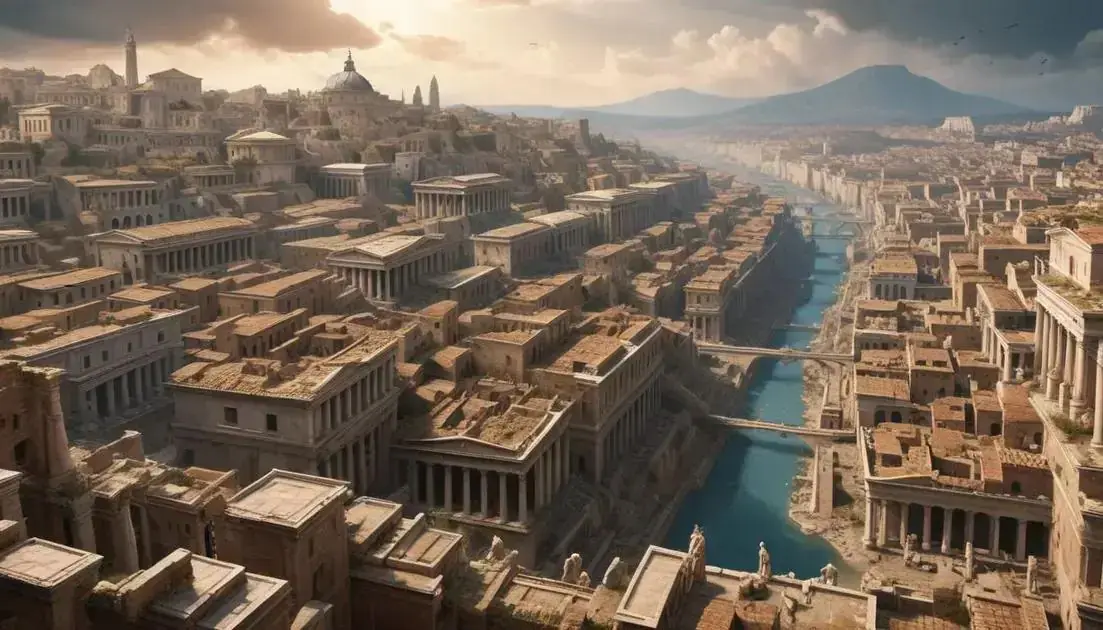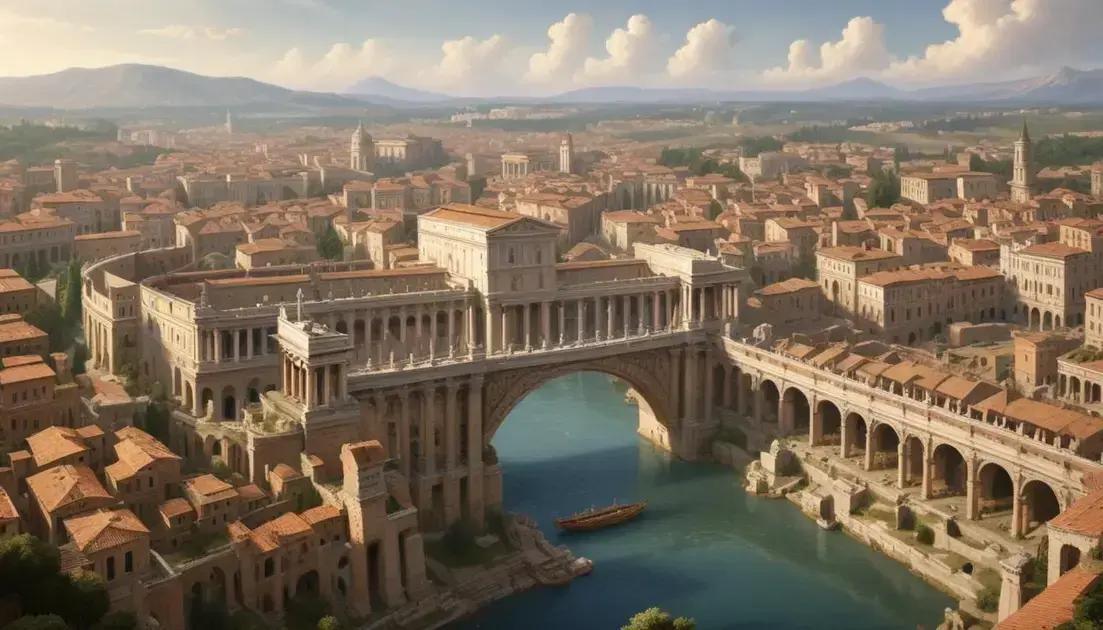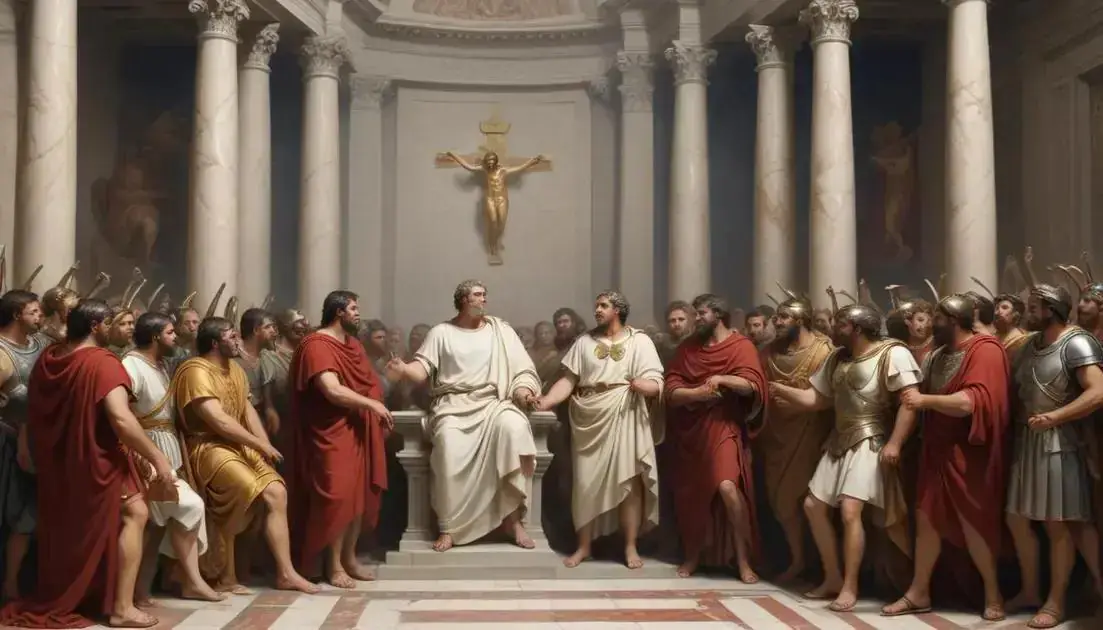
Constantinople: From Byzantium to Capital of Christendom
Constantinople, once the center of the Byzantine Empire, transformed into a vital Christian capital under Emperor Constantine. Known for its stunning architecture like the Hagia Sophia, the city symbolized the fusion of cultures and influenced Christianity’s spread. Today, Istanbul reflects this rich legacy, blending ancient and modern life while remaining a major hub for art, culture, and trade.
Have you ever wondered how Constantinople evolved from a bustling Byzantine city to the center of Eastern Christianity? Let’s dive into its fascinating history!
The foundation of Constantinople
The foundation of Constantinople is a fascinating tale. It all began in 330 AD when Emperor Constantine the Great decided to build a new capital. He chose the site because of its strategic location, linking Europe and Asia.
Constantine wanted a city that could stand as a center of power and culture. So, he took the existing city of Byzantium and transformed it. He expanded its walls and built new structures, making it a vibrant place.
The city was located near the Bosporus Strait, which was crucial for trade and defense. This location made Constantinople a vital trade route. Merchants from various regions came here to exchange goods.
To attract more people, Constantine granted various privileges and encouraged migration. This led to a diverse population, including Greeks, Syrians, and Jews. Such diversity enriched the city’s culture and traditions.
Over the years, the city grew rapidly. Its stunning architecture and lively markets drew attention across the empire. The famous Hagia Sophia was built to reflect the glory of the new capital, showcasing its importance.
Constantinople’s role in Christianity
Constantinople played a vital role in the history of Christianity. After Emperor Constantine established the city, it became a major center for the Christian faith. Constantine sought to promote Christianity as a unifying force in the empire.
One of the most significant events was the First Council of Nicaea in 325 AD. This council helped define Christian beliefs and resolve early disputes. It was an essential step in organizing the church and solidifying its authority.
Constantinople was home to many important churches and religious leaders. The stunning Hagia Sophia became a focal point of Christian worship. It stood as a symbol of the church’s strength and glory.
The city also became a hub for theological education. Many scholars flocked to Constantinople to study and teach Christian doctrine. This intellectual environment helped shape many foundational ideas of the faith.
Throughout the centuries, Constantinople faced challenges, including invasions and schisms within the church. However, it remained a proud center of Christianity. The city hosted important events that influenced the faith and its followers.
Today, the legacy of Constantinople continues to be felt. Its history is a testament to the enduring impact of Christianity in shaping societies and cultures across the world.
Transformation from Byzantium to a Christian capital
The transformation of Byzantium into a Christian capital was an essential chapter in history. Originally, Byzantium was a Greek city, thriving on trade and culture. Its strategic location made it attractive for the Roman Empire.
In 330 AD, Emperor Constantine recognized its potential. He decided to expand and rename the city to Constantinople. This marked the start of its journey as a Christian capital.
Constantine aimed to build a city that reflected Christian ideals. He constructed important churches and public buildings that showcased Christian art and architecture. The Hagia Sophia became the most famous example of this vision.
This transformation attracted many people. Christians from all over the empire came to live and worship in Constantinople. The city quickly became a vibrant center for the Christian faith.
Constantinople also played a key role in spreading Christianity. It was a place where church leaders gathered to discuss important issues. Decisions made here shaped Christian beliefs and practices.
Over time, the city faced challenges, such as invasions and conflicts. Despite these struggles, it remained a symbol of Christian strength and unity.
Today, the legacy of this transformation is still evident. Constantinople’s rich history continues to inspire and influence cultures and religions around the world.
Architectural and cultural significance of the city
The architectural and cultural significance of Constantinople is truly remarkable. The city was a melting pot of styles and influences. It combined elements from Greek, Roman, and Byzantine architecture.
One of the most famous structures is the Hagia Sophia. This grand church was built under Emperor Justinian and showcases stunning mosaics and large domes. It symbolized the beauty and power of the Christian faith.
Moreover, the city had impressive walls that protected it from invasions. These walls were a feat of engineering and demonstrated the city’s strength. They helped Constantinople stand firm against attacks for many years.
Culturally, Constantinople was a hub of art and education. Scholars and artists from various backgrounds gathered here. They shared ideas and created vibrant works that reflected the city’s diversity.
Festivals, markets, and public celebrations filled the streets with life. These events were essential in fostering a sense of community among different cultures. The legacy of these cultural interactions can still be seen today.
Constantinople also contributed to the diffusion of knowledge. The city preserved and copied ancient texts, helping to keep history alive. This role further established its importance in the ancient world.
Today, the remnants of this rich architectural heritage attract visitors from all over. They come to marvel at the intricate designs and learn about the city’s fascinating past.
Legacy of Constantinople in modern times
The legacy of Constantinople is significant in modern times. Even today, the city influences culture, religion, and politics around the world. The name “Istanbul” is a reminder of its rich history.
Many architectural treasures remain from the past. Buildings like the Hagia Sophia and the Blue Mosque attract millions of visitors each year. These sites showcase the beautiful blend of cultures and traditions.
Constantinople’s role in Christianity still resonates. It helped shape the Christian faith and its values. Modern religious leaders often look back to this city for inspiration.
The city also played a crucial part in trade. It connected the East and West for centuries. This legacy continues to affect global commerce today. Istanbul is still a major hub for business and tourism.
Through art and education, the city inspired many movements. Writers and artists often reference its vibrant history. The diverse cultural influences remain evident in contemporary works.
Moreover, the spirit of resilience seen in Constantinople’s history inspires many people. The city has endured struggles and changes, reflecting the strength of its people.
Today, Istanbul blends old and new. Its streets echo with stories of the past while embracing modern life. This unique combination makes it a fascinating place to explore and understand.
Conclusion
In conclusion, the rich history and significance of Constantinople continue to influence our world today. The city’s architectural beauty and cultural diversity make it a vital part of history. From its role in the spread of Christianity to its impact on trade and art, Constantinople’s legacy is ever-present.
Modern Istanbul stands as a testament to this legacy, blending ancient traditions with contemporary life. Visitors can see this heritage in its famous landmarks and vibrant culture. It serves as a reminder of the city’s resilience and importance across centuries.
As we reflect on the legacy of Constantinople, we can appreciate how it shaped our present. Understanding this history enriches our perspective and inspires future generations. The story of Constantinople teaches us about the strength of communities and the enduring power of culture.


